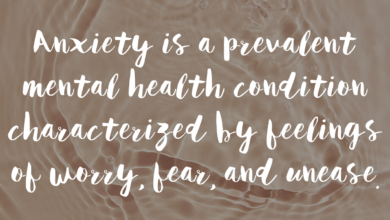What Are The Types of Anxiety Disorder?

ALL THE PHOBIAS…
There are some medically named phobias. But there are also many other phobias people might experience. To meet the criteria necessary to be medically diagnosed with a Specific Phobia, according to guidelines in the Diagnostic and Statistical Manual 5th edition, a phobia must be include the following: is an excessive and unreasonable fear, provokes an immediate anxiety response, affects your routine in a life-limiting way, means you avoid the thing/situation or exposure to it causes extreme distress and this fear is not caused by another disorder.
The phobias we’ve already mentioned that meet this criteria and are listed in the DSM include: Agoraphobia, Social Phobia (Social Anxiety Disorder), Panic Disorder. There is also Specific Phobia (or Simple Phobia – although that medical terminology may seem a contradiction in terms since it’s unlikely a phobia is experienced as “simple”).
However people often describe their excessive fears as phobias even if they do not meet the DSM criteria. So you might hear people speak of a fear of many things as a phobia. And these might include:
- Nyctophobia – fear of the dark, anxiety when the sun goes down
- Monophobia – fear of being alone
- Scopophobia – fear of being watched
- Haphephobia – fear of being touched
- Athazagoraphobia – fear of being forgotten
- Emetophobia – fear of vomiting
- Trypophobia – fear of holes
- Coulrophobia – fear of clowns
- Trypanophobia – Fear of needles
- Arachnophobia – Fear of spiders
- Aquaphobia – Fear of water
- Hippopotomonstrosesquippedaliophobia – the fear of long words
- And many more…
HANG ON! ARE THEY ANXIETY DISORDERS?
- Obsessive-Compulsive Disorder (OCD)
- Eating Disorders
- Body dysmorphic disorder
- Post-Traumatic Stress Disorder (PTSD)
These kinds of conditions, whilst diagnosed and classified as separate to anxiety disorder can begin as a means to managing overwhelming anxious feelings and can stem from undiagnosed anxiety disorders. Our minds are incredible things and will find new ways to survive overwhelming thoughts and feelings like undiagnosed anxiety disorders by creating new mind maps for coping that can lead to the development of other mental illnesses like eating disorders, OCD or phobias.
It’s important to note that some anxiety disorders, such as OCD and PTSD, are also classified as a separate class of disorders, but they still have anxiety as a key symptom .
Obsessive-compulsive disorder (OCD). is a mental health condition that is characterised by unwanted, intrusive thoughts also colloquially known as ‘obsessions’, that can lead to repetitive behaviours or compulsions. These compulsions are often performed to reduce anxiety caused by the obsessions.
Body dysmorphic disorder is when a person spends a great deal of time worrying about their physical appearance, a specific part of their body or an overall unease with their bodily appearance. The perceived “flaws” are often imperceptible to others and are anxiety related.
PTSD is a disorder developed after a person goes through traumatic events and has related symptoms to anxiety disorders. Symptoms of both PTSD and CPTSD (complex PTSD – originating from childhood) can be intense.
Another group of disorders linked to anxiety are eating disorders. People with eating disorders such as anorexia nervosa or bulimia nervosa often experience intense anxiety about their weight and body image. This anxiety can lead to extreme dieting behaviours, binge eating, and other ultimately life-threatening behaviours. Some eating disorders are directly related to anxiety around food types, colours or other restrictive thoughts connected to food and eating
Source link
#Types #Anxiety #Disorder

